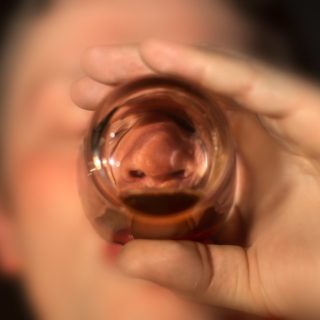Consuming alcohol is an integral part of western culture. Most adults in the US will consume alcohol at some point during their lives. Close to 56% of all surveyed adults report having at least one drink within the past month. While most people can safely consume alcohol and never experience any negative consequences from it, others will struggle with the ability to control the amount they drink. While roughly 6% of the US adult population struggles with alcohol abuse disorder, a significant segment of the population participates in dangerous binge drinking sessions. What is binge drinking, and when does excessive drinking indicate that it’s time to attend a rehab facility for alcohol abuse?
Binge Drinking: Is it time for treatment?


Alcoholism
Binge Drinking: When is it Time for Treatment?
What is binge drinking?
Binge drinking is the act of excessive consumption of alcohol. Not every person who engages in binge drinking behaviors has an alcohol use disorder, though. Binge drinkers often drink to excess in social situations. They often experience negative consequences of excessive drinking, but do not necessarily have a dependence on alcohol or experience cravings for alcohol. However, people who are addicted to alcohol will sometimes engage in binge drinking behaviors.
Binge drinking is defined as a pattern of drinking that raises a person’s BAC level to .08 grams percent or above quickly. Typically, this means five drinks in two hours for men and four drinks per two hours for women.
What demographics are the most notorious binge drinkers?
- People between the ages of 18 and 34 are most likely to binge drink.
- One in six US adults will binge drink at least four times per month, and they will consume an average of seven drinks per session.
- Men are more likely to binge drink than women.
- Binge drinking is more common in households with annual incomes of $75,000 or more, and in those who have obtained higher levels of education.
- Binge drinkers with lower education levels will consume more binge drinks per session than more educated binge drinkers.
- 90% of US adults who drink in excess report binge drinking in the past 30 days.
People younger than 21 who drink alcohol binge drink, and consume larger amounts in a binge drinking session than people over 21.
What are the significant risks associated with binge drinking?
Binge drinking can cause many serious problems, including increased incidents of accidents, traumatic injuries, and alcohol poisoning. Other significant risks associated with binge drinking include:
- Domestic violence, sexual assault, and suicide.
- Risks of STIs.
- Poor pregnancy outcomes, such as miscarriages and stillbirths.
- Fetal alcohol spectrum disorders.
- SIDs
- Increased risk of developing chronic health problems.
- Cancer
- Problems with memory and cognition.
- Risk of alcohol dependence.
Who is at risk of becoming a binge drinker?
Young men are the most at-risk for engaging in binge drinking behaviors. Unfortunately, recurrent episodes of binge drinking as a young person increase the chances of that person developing a full-blown addiction to alcohol later in life.
What are the symptoms of binge drinking?
Binge drinkers typically do not have an AUD, but continuing to engage in binge drinking can lead to alcohol dependence. Binge drinking usually occurs on weekends and holidays, where binge drinkers will rationalize their excessive alcohol consumption. Binge drinkers and also heavy drinkers don’t drink daily but during certain occasions. They will often ignore family and friend’s concerns.
People who binge drink often drink more than they intend. This is also a sign of a potential alcohol use disorder forming in an at-risk person. Engaging in risky behaviors, such as drunk driving or unsafe sex, are common occurrences with binge drinkers. Failing to uphold certain duties and forgetfulness because of excessive alcohol consumption is another symptom.
Why does someone need treatment for binge drinking?
Untreated, binge drinking can turn into alcohol dependence. In addition, binge drinking causes a person to become severely impaired. They can put themselves and others at risk of bodily harm. Drinking costs the US economy 249 billions of dollars per year because of increased costs associated with:
- The criminal justice system.
- Losses in workplace productivity.
- Increased healthcare costs.
Of that 249 billion in yearly losses, binge drinking accounts for 77% of those losses. Binge drinking behaviors strain families and communities. Excessive drinking can also harm babies and children. It’s crucial that people who struggle with excessive binge drinking behaviors get treatment for these problems before they spiral entirely out of control. When relationships, work, and the ability to function in day-to-day life are impaired, it’s time to seek treatment.
How is someone treated for binge drinking?
Binge drinkers often need to cease alcohol consumption for several months and work on customized therapy methods to learn how to engage in light or moderate drinking safely.
Meeting with a trained therapist for alcohol abuse disorder is often recommended as the first step toward treatment. A therapist can help someone identify the root causes of their binge drinking behavior, see all of the consequences of a binge drinking habit, and form effective, custom treatment options.
People who seek treatment for binge drinking need support from family and loved ones. Group therapy and family therapy can also be helpful for learning the individual’s triggers and how to cope with them so that the patient can avoid binge drinking.
Therapists can also help patients develop drinking-reduction training methods. This is a method for defining each patient’s personal goals, and then giving the patient the tools necessary to participate in self-monitoring behaviors, so they don’t fall into old patterns and harmful binge drinking habits. Training may include a standard of how many drinks per week and per session a person can safely consume if any at all. A personalized treatment approach is the most effective way to identify a person’s triggers and developing achievable goals for their future well-being.
Binge drinkers often need to cease alcohol consumption for several months and work on customized therapy methods to learn how to engage in light or moderate drinking safely.
Meeting with a trained therapist for alcohol abuse disorder is often recommended as the first step toward treatment. A therapist can help someone identify the root causes of their binge drinking behavior, see all of the consequences of a binge drinking habit, and form effective, custom treatment options.
People who seek treatment for binge drinking need support from family and loved ones. Group therapy and family therapy can also be helpful for learning the individual’s triggers and how to cope with them so that the patient can avoid binge drinking.
Therapists can also help patients develop drinking-reduction training methods. This is a method for defining each patient’s personal goals, and then giving the patient the tools necessary to participate in self-monitoring behaviors, so they don’t fall into old patterns and harmful binge drinking habits. Training may include a standard of how many drinks per week and per session a person can safely consume if any at all. A personalized treatment approach is the most effective way to identify a person’s triggers and developing achievable goals for their future well-being.
How long does treatment last?
Treatment for binge drinking is specific to each individual patient. Learning how to be vigilant and avoid triggers that can lead someone to binge drink is a lifelong habit. Fortunately, it’s possible to treat binge drinking behaviors and prevent the development of AUD with help from trained therapists and family support.




